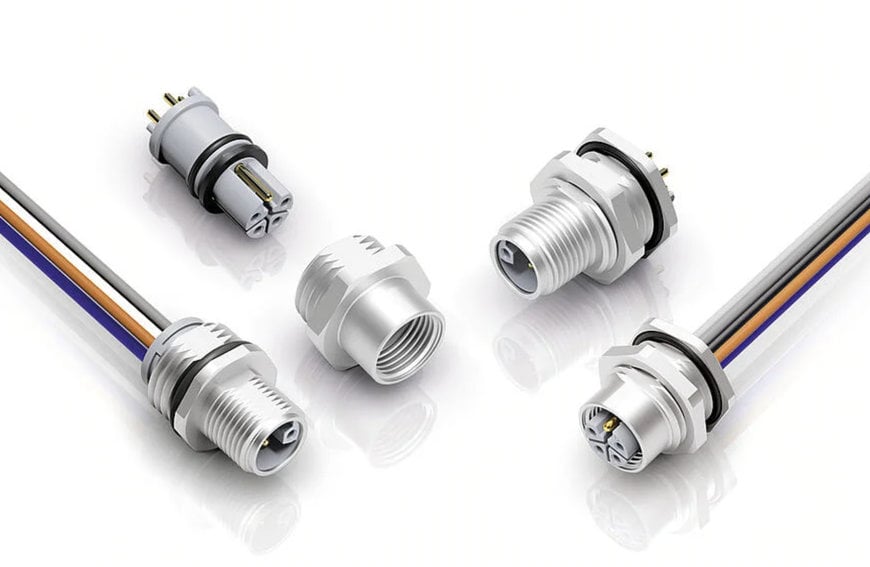www.industry-asia-pacific.com
31
'23
Written on Modified on
BINDER: M12-TYPE CONNECTORS HAVE BECOME INDISPENSABLE INTERFACES FOR DEVICE CONNECTIVITY
Binder is supplementing its M12 lines with additional products that support users in automation technology to achieve efficient, flexible, and error-free installation.

The product development was based on the requirements of the M12-relevant DIN EN IEC 61076-2 standard. It follows current trends with regard to miniaturization, variability in use and cost efficiency.
Like all M12 series from binder, these products meet at least the IP67 protection degree. They are mechanically robust, durable, and designed to be user-safe thanks to coding. Several shielded or shieldable product versions are available with regard to application in electromagnetically loaded industrial environments.
For the current year, binder has announced further new developments in the field of push-pull locking and M12 one-cable solutions.
M12 basics: the backbone of networking in the IIoT
Originally used primarily in vehicle engineering, M12 has become established since the 1980s as an extremely robust, reliable, and compact, but also high-performance interface in automation technology. It is used in new machinery and systems as well as for modernizing existing infrastructure. The more the Industrial Internet of Things (IIoT) prevails in modern factory and process plants, the more the number of networking-capable automation components rises – and consequently the need for industrial interfaces of this kind.
Depending on the coding and design, M12 connectors can transmit signals, data, and, if required, electrical power between field devices, such as sensors, controllers, or drives, and other network nodes. On the one hand, they are able to handle the high data rates of modern Ethernet networks. On the other hand, they can also supply components such as drives with high power levels. In order to make the best possible use of available installation space, it is advantageous to transmit data and electrical power via one and the same connector. Such hybrid solutions are becoming increasingly attractive, but are particularly demanding in their technical implementation.
The A coding (application area: sensors, DC power) is available with 3, 4, 5, 8, and 12 pins. The B (Profibus), D (100 Mbit Ethernet) and X (10 Gbit Ethernet) codings with 4 and 8 pins, respectively, are suitable for data transmission at different transfer rates.
In the case of power supply, for example for AC drives and frequency converters, S and K (up to 630 V(AC) at up to 16 A) and, for example for DC drives or LED lighting, T and L (up to 63 V(DC) at up to 16 A) apply.
All M12 connectors provide minimum IP67 protection against dust and water ingress. Special variants are also available in IP68 and IP69K for hygienically demanding applications. Depending on the design, the M12 connectors are intended for different application scenarios: Versions with special termination such as crimping or wire clamp technology are suitable for applications with vibrations; others are suitable for outdoor use and, for example, resistant even to UV radiation. Depending on the application field, metal, plastic or stainless steel housings are used.
M12 innovations: optimized for the IIoT
As field devices increase in functionality, their power requirements grow. In addition, the density of interfaces increases, which requires particularly compact connectivity solutions. For device supply with 63 V(DC) at up to 16 A, binder has expanded its M12 portfolio by panel mount connectors with L-coding and dip solder contacts. The space-saving 823 series products are suitable for manual, wave, and reflow soldering on printed circuit boards. Protected to IP68 when mated, they are designed for both front and rear panel mounting, with their sophisticated two-piece design helping eliminate potential failure sources: Because the mounting body is soldered to the PCB but the flange housing is attached directly to the device, soldering can be done without the housing, which in turn can be mounted without disturbing the solder joints.
The time-consuming and error-prone single-core wiring is no longer necessary with ready-to-connect cables, such as those also offered by binder in the M12 segment. The pre-assembled, overmolded products, which have already been tested in accordance with DIN EN IEC 61076-2, significantly reduce the installation and cabling effort and help to implement cost-efficient plug&work concepts. The binder portfolio of ready-to-connect cables in the M12 segment includes a number of versions: Straight and angled products, as well as products molded on one or both sides, with various codings and in different cable qualities are available with 3 to 12 pins.
M12 outlook: single-cable solution and push-pull closure
binder is responding to the trend towards miniaturization and reduced installation effort with its own single-cable solution for the M12 segment. The M12 connector combines 7 signal contacts with 2 power contacts and thus enables power and signal supply in just one connector. Rated currents of 12 A and voltages of up to 63 V are possible for power supply, and 0.5 A and up to 12 V for signal transmission. In addition to the panel mount parts with THR or SMT contacts, there will also be those with wires, and variants with stainless steel and plastic housings will be available. The hybrid connectors are also designed for use in outdoor applications and thus expand the range of applications enormously.
Additionally, binder announces the development of M12 connectors with outer push-pull locking. This variant complements the M12-threaded products with push-pull locking in M12 design. Instead of screwing, here the cable side latches with the device side when the plug is pressed on. The product design follows DIN EN IEC 61076-2-010, ensures backwards compatibility with M12 screw locking on the device side and thus represents a particularly flexible and time-saving connection concept.
www.binder-connector.com

